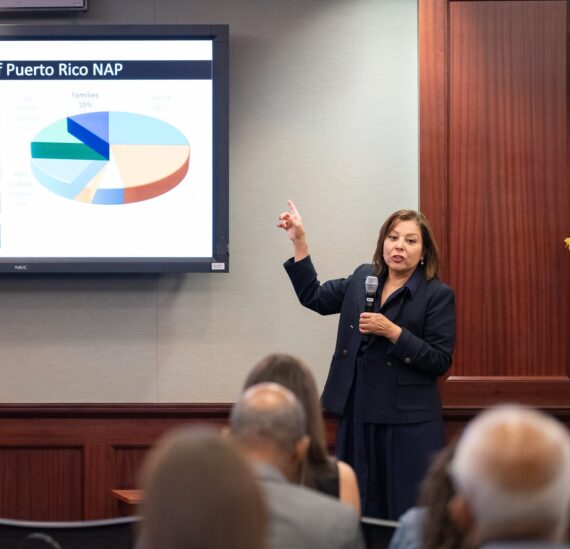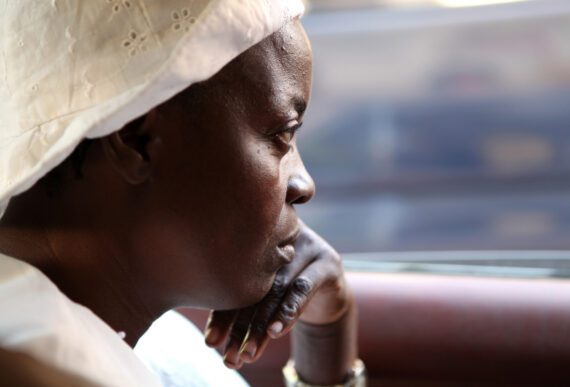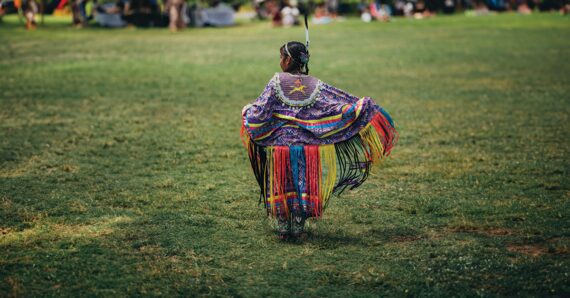Jayson Call Fragoso is 52-years old and serves as part of the Puerto Rico Chaplain service organization. He has dedicated the last 13 years of his life to servicing Puerto Ricans who do not have access to food. Sadly, when his son was diagnosed with Diabetes Type I, he had to quit his job to support him. Their family of five depended solely on Jayson’s wife’s income of $7.25/hour. Despite their low income, Jayson and his family were repeatedly rejected from NAP, and it took almost a year before they received the help the family needed.
Bread for the World has been working with the Puerto Rican faith community to ensure that Puerto Ricans have equitable access to SNAP (the Supplemental Nutrition Assistance Program), the primary food assistance program in the U.S. While people in Puerto Rico are U.S. citizens, their treatment is vastly different than that of mainland citizens.
In 2015, the Puerto Rico Statistics Institute found that over 33 percent of the adult population was food insecure. This was before Hurricane María, Hurricane Fiona, COVID-19, and the earthquakes that ravaged the southwest part of the island. A study by George Washington University estimated that 40 percent of Puerto Rican families experienced food insecurity during first few months of the COVID-19 pandemic.
Despite the high rates of food insecurity, Puerto Ricans do not have access to SNAP. Instead, Puerto Rican residents receive a block grant called NAP (the Nutrition Assistance Program). The funding cap on NAP means not all Puerto Rican residents who would otherwise qualify for SNAP will qualify for NAP. It also means that during emergencies any additional nutritional aid assistance must be appropriated by Congress, a process that took six months to complete after Hurricane María devastated Puerto Rican communities. In contrast, the U.S. Virgin Islands and Guam, territories whose citizens receive SNAP, can request Disaster SNAP and have additional emergency aid in a matter of weeks.
Including access to SNAP for the U.S. citizens of Puerto Rico in the upcoming farm bill reauthorization process will move us toward more nutritious, sustainable, and equitable food systems.
Bread for the World has followed two principles that guide our work on moving Puerto Rico from NAP to SNAP. One is that we can’t do this alone. The other is that we must call on the leadership of people and leaders who are directly impacted by food insecurity and hunger.
After Hurricane Maria and during the COVID-19 pandemic, Bread supported the Coalition for Food Security for Puerto Rico’s legislative push to secure emergency funding for NAP. This year, we invited representatives of the largest faith-based organizations in Puerto Rico to our annual Advocacy Summit.
During the summit, the representatives met with Bread members and supporters to develop a strategy to gain support from U.S.-based churches on the issue. They also met with members of Congress to discuss the challenges that Puerto Ricans face with food security and the inequities between NAP and SNAP.
Bread is only as strong as the leaders who work and pray together for the end to hunger. We are strengthened in this work by the leadership of groups like ASSPEN, ACOMERPR, Nutriendo PR, and the Coalition for Food Security for Puerto Rico, to name a few. We can say with confidence that with the support and leadership of Puerto Ricans living both on the Island and the mainland, and alongside of Latino leaders across the U.S., we can make a difference in the lives of people experiencing hunger in Puerto Rico and around the world.



